This post contains affiliate links. Please see our disclosure policy.
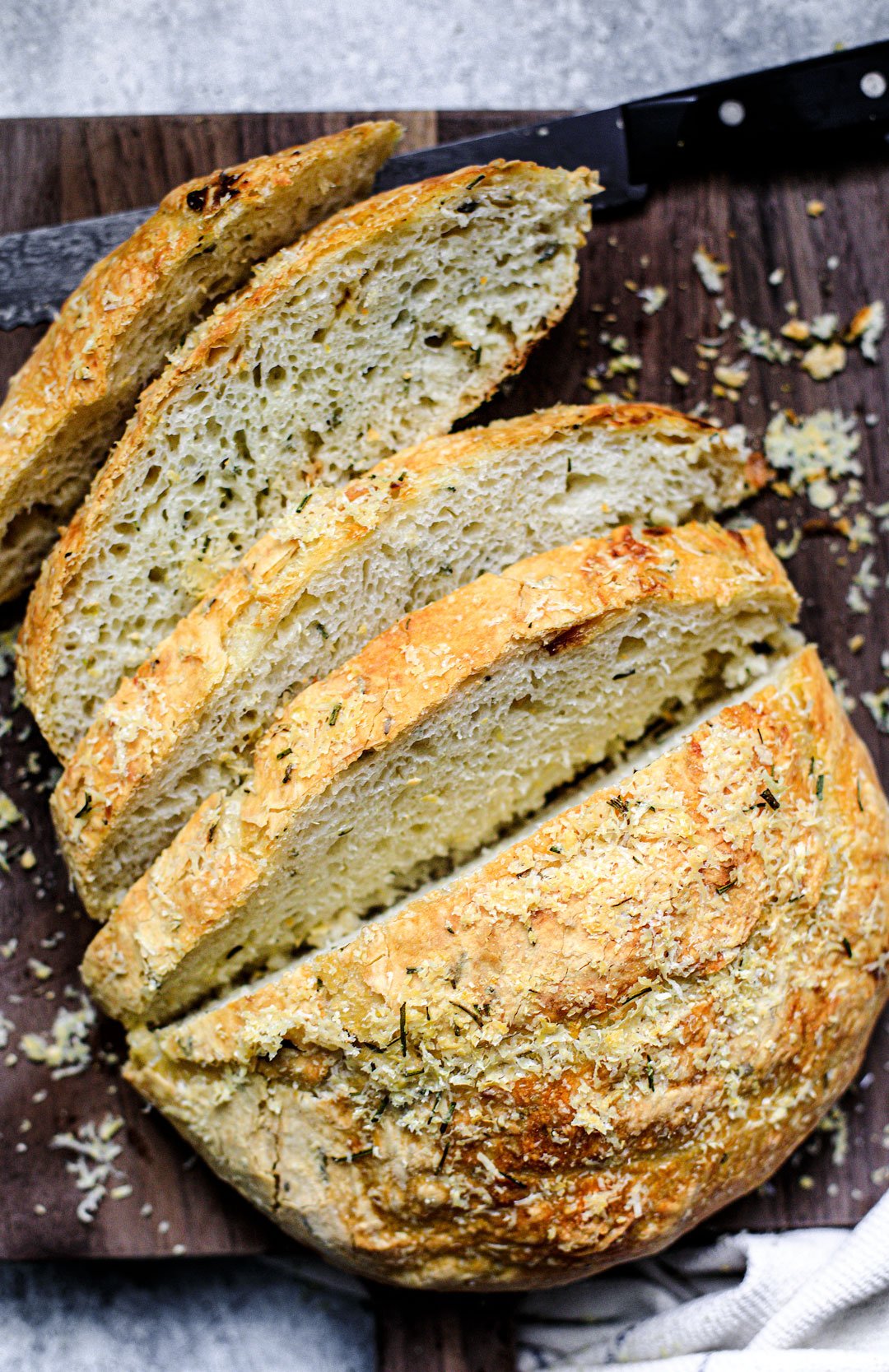
This easy no-knead Dutch oven bread with roasted garlic and rosemary is great for hearty sandwiches, with pastas, dipped into soups, or on its own with butter.
I’m not sure if there’s anything more wholesome and satisfying than making your own bread; a labor of love in it’s realest form.
First, there’s the anticipation of your dough rising. Then, the satisfaction of sticking your hands into that puffy sticky mess, rolling it through flour to create a nice plush cushion, and baking it to golden perfection. Finally, cutting through the brittle crust, smearing a generous amount of butter over the warm, porous surface, and feeding yourself a slice of victory—completely careless over the fact that there’s butter dripping down your wrist.
It’ll make you want to snub store-bought bread forever.
Easy Dutch Oven Bread with Roasted Garlic and Rosemary.
Dutch oven bread is fantastic without additions, but during the cooler months, I’m a sucker for cozy aromas and winter herbs. So I thought—if jazzing up bread is as easy as simply adding the extra ingredients to the dough, why am I not doing this?
I already had a ton of garlic and rosemary from testing a different recipe, and the thought of adding it to an artisanal bread was too awesome to ignore.
The flavors come through wonderfully. This bread is perfect for big Italian sandwiches, soup dipping, and pastas tossed in marinara. (And of course, eating it on it’s own, warm, and slathered with melty butter.)
How hard is it to make homemade bread?
Not hard at all, my friends. In fact, it’s downright easy. Especially no-knead Dutch oven bread. Mix your ingredients, let them rise for 10-12 hours (or overnight), roll it out into a ball, cover it, let it sit to rise for two hours, and then bake it. BOOM. Homemade bread.
But here’s the gist of it:
- Place your ingredients (flour, salt, yeast, roasted garlic, and chopped fresh rosemary) into a large bowl. Stir it until well-blended, then add some warm water. Stir with a fork or wooden/silicone spoon until your mixture becomes gluey and a bit shaggy. Cover the bowl tightly with plastic wrap and set it to rest in a warm area of the house for at least 10-12 hours (or overnight).
-
Prep a clean surface, like a wooden cutting board or your counter. Toss a generous amount of flour over the surface to prevent any sticking. Unwrap the bowl of dough, set the plastic wrap aside, and gently peel/dump the dough out onto your floured surface.
-
Toss a small amount of flour over the top of the dough, form it into a ball, drape it with plastic wrap, and let it rest for 15 minutes.
- Place the dough onto a lightly floured tea towel and wrap it up. Let it sit on the counter for about 2 hours or until the dough has doubled in size.
- Carefully transfer the dough to a Dutch oven. Cover and bake for 30 minutes.
- Take the Dutch oven out and remove the lid. The bread’s surface should be light golden in color. Brush the top with a bit of olive oil, then sprinkle some grated parmesan and fresh chopped rosemary on top.
- Place it back into the oven, uncovered, for another 10 minutes or so. Remove from the oven, and let the bread sit for a few minutes ro cool. (In the meantime, just take in the amazing smell and listen to that fabulous crackle!)
Once it’s cooled a bit (not too much though, you want to dig it when it’s warm!) start slicing.
So, are you already halfway out the door to get your ingredients to start making this crave-worthy bread?
Follow me on Instagram and tag @killing__thyme so I can see your KT creations!
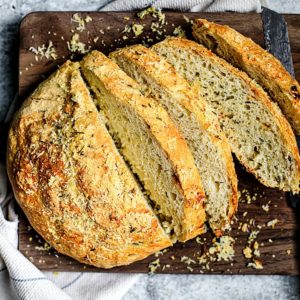
Easy Dutch Oven Bread with Roasted Garlic and Rosemary {No-Knead Bread}
Equipment
- Dutch oven
- Plastic wrap
- (2) tea towels
- Tin foil
- Sheet pan or muffin pan (for roasting garlic)
Ingredients
- 3 cups All purpose flour
- 2 tsp sea salt
- 1/2 tsp instant yeast, you can use active dry yeast (same amount), but your dough may take a little longer to rise.
- 1.5 cups warm water
- 1 head of garlic, roasted
- 2 TBSP finely chopped rosemary, plus more for garnish
- 1 TBSP olive oil
- 2 TBSP grated parmesan or pecorino romano (optional)
Instructions
To roast the garlic.
- Preheat oven to 400º F. Remove any of the extra papery outer layers of the garlic bulb, leaving the skins of the individual cloves of garlic intact. Cut about 1/4 inch from the top of the cloves to expose the tops of the individual cloves.Place the garlic head cut side up onto a square of tin foil. Drizzle about a teaspoon of olive oil over the bulb making sure to oil up those exposed cloves of garlic. Then, close up the foil creating a tent for the garlic bulb. Placed the wrapped bulb onto a sheet pan or in a muffin pan.Bake at 400° F for about 30-40 minutes, or until the cloves are lightly browned and feel soft when pressed.When ready, remove the garlic from the oven and set it aside to cool. Once cool, squeeze each roasted garlic clove into a small dish; set aside.
- To a large bowl, add the flour, salt, yeast, garlic, and rosemary. Stir until well-blended, then pour in the warm water, stirring with a fork or wooden/silicone spoon until the mixture becomes gluey and a bit shaggy. Lift your dough a bit to check and see if there is excess flour beneath it. If so, add a splash of water to the excess flour and combine it with the gluey dough. If you skip this step, you might end up with a few hardened floury bits at the base of your dough.
- Cover the bowl tightly with plastic wrap and set it to rest in a warm area of the house for at least 10-12 hours (or overnight). I leave mine on the counter near my dishwasher if it's been running. You could also leave it in a humid laundry room.
- When your dough is ready: prep a clean surface, either a wooden cutting board or your counter. Toss a generous amount of flour over the surface to prevent sticking. Unwrap the bowl of dough, set the plastic wrap aside, and gently peel the dough out onto your floured surface. Toss a small amount of flour over the top of the dough. Then, grab one side of the dough and fold it over itself once or twice.
- Drape the plastic wrap over the dough and let rest for 15 minutes. In the meantime, prep two clean tea towels; generously flour one of them, and set them aside.
- After 15 minutes minutes, discard the plastic wrap. Grab each of the four sides of the dough one by one and pull them to the center to shape your dough into a ball. Once all sides have been folded, quickly but carefully flip it over so that the smooth side is face-up and seams are face-down. Place the dough onto the floured tea towel, and sprinkle a bit of flour on top. Cover with the other tea towel and let it rest for two hours, or until your dough has doubled in size. (Note: if it's cool in your house, this process might take a bit longer.)
- 20 minutes before baking time, preheat the oven to 450º F and place your Dutch oven inside the oven with the lid on. This heats it up, creating a warm space for that dough. Once the oven reaches 450º F, take the Dutch oven out, set it somewhere safe, and remove the lid. Remove the top tea towel from off the dough, slide your hand underneath the dough, flip it over in your hands and carefully transfer it into the dutch oven, seam-side facing upward (I do this over the sink to minimize the splash of flour). If the dough sticks to the towel at all, simply peel it off and use more flour on the towel next time.
- Place the lid back onto the Dutch oven and return to the oven for 30 minutes. Once 30 minutes has passed, take the Dutch oven out of the oven. Remove the lid. Gently brush about a tablespoon worth of olive oil over the top of the bread, then sprinkle with grated parmesan or pecornio romano and some extra rosemary, if you left aby aside. Place the Dutch oven back into the oven, uncovered, and bake for an additional 10-15 minutes, or until the top crust is a gorgeously crackled golden color. As a test, you can tap the loaf with the back of a spoon; it should sound hollow.
- Remove the Dutch oven from the oven and, with a silicone spatula or wooden spoon, carefully transfer the bread to a cooling rack to cool completely (or for however long you can stand to wait, which in this house, is five minutes). Use a large serrated bread knife to slice into it. Slather butter onto a slice and mow down. I always encourage the straight-out-of-the-oven taste test ;)
Notes
- In total, this recipe requires 30-40 minutes of cooking time to roast the garlic, 5 minutes of prep, 10 hours of idle time to let the dough rise, and 40-50 minutes of baking — so plan in advance.
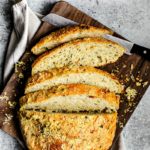
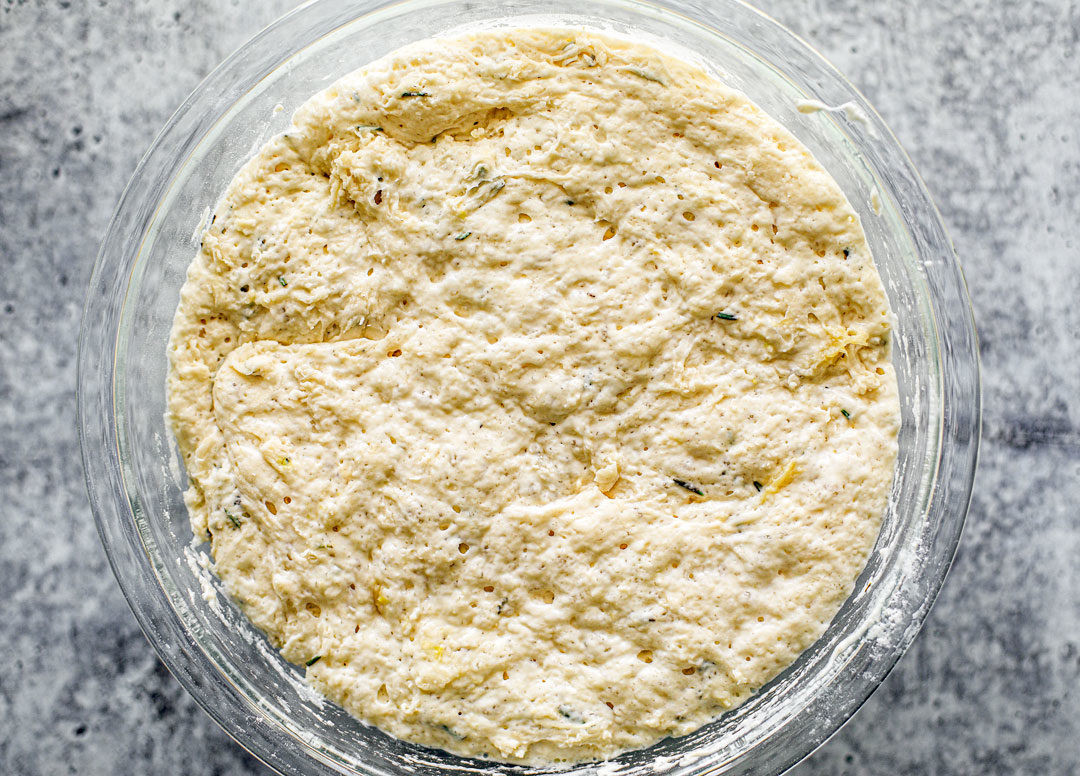
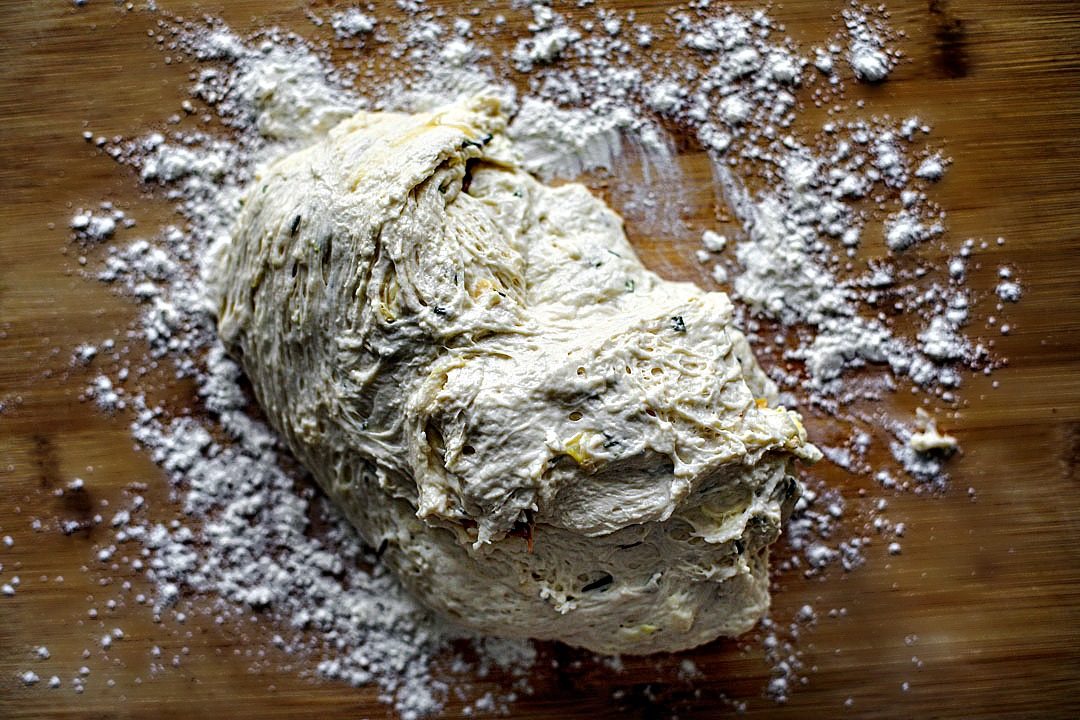
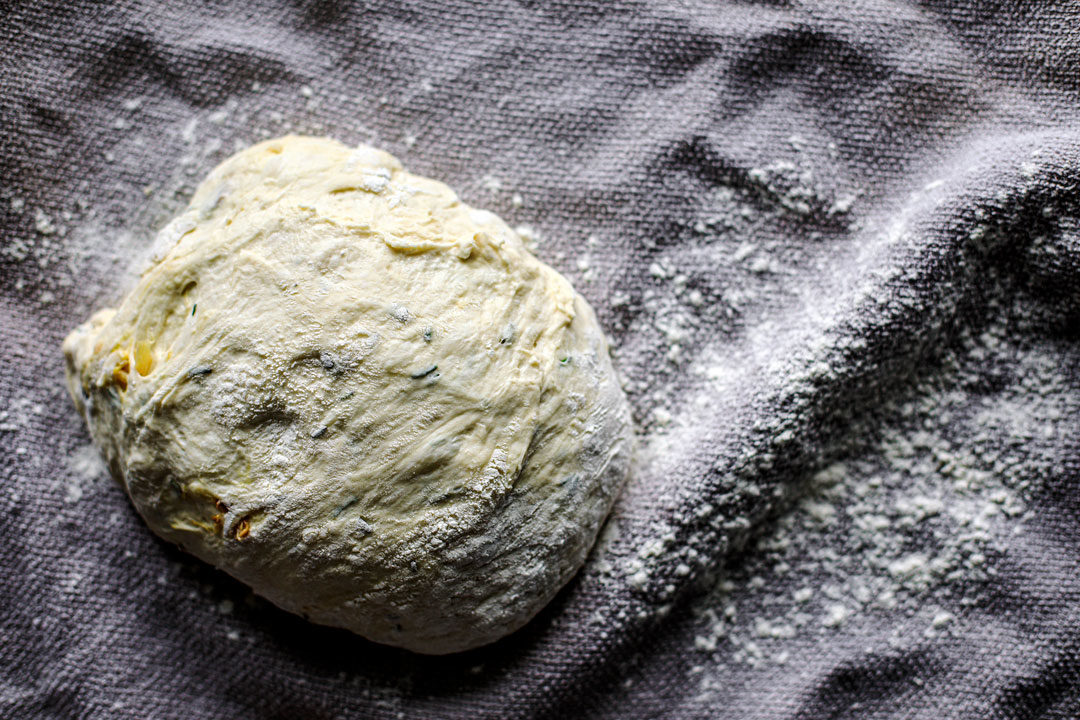
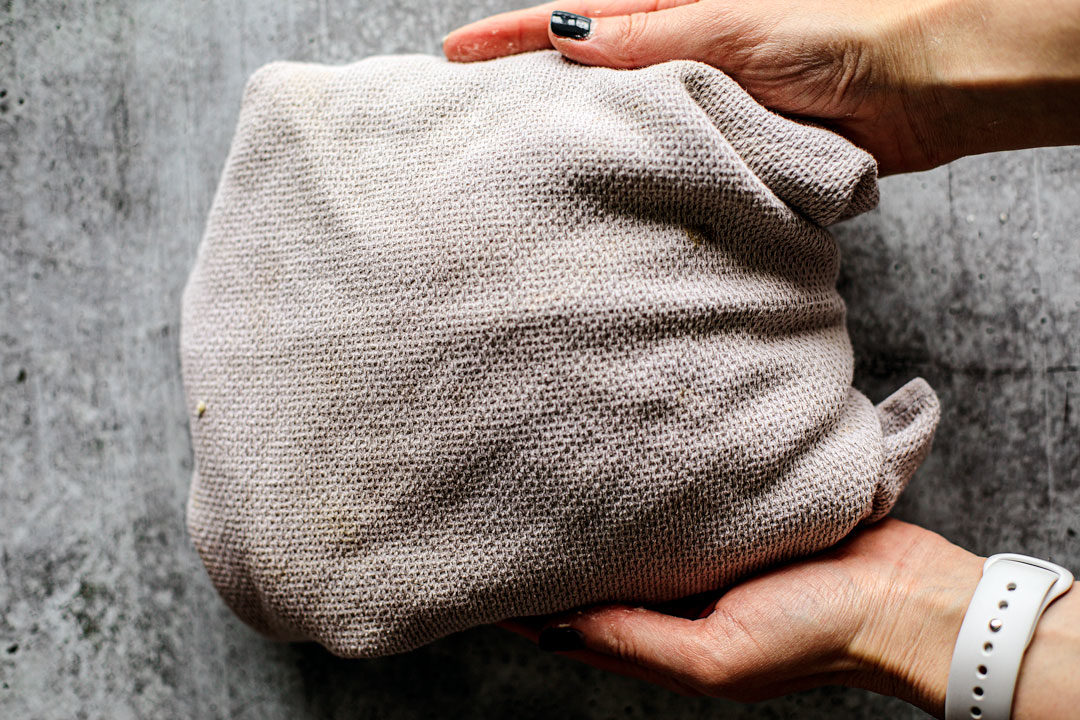
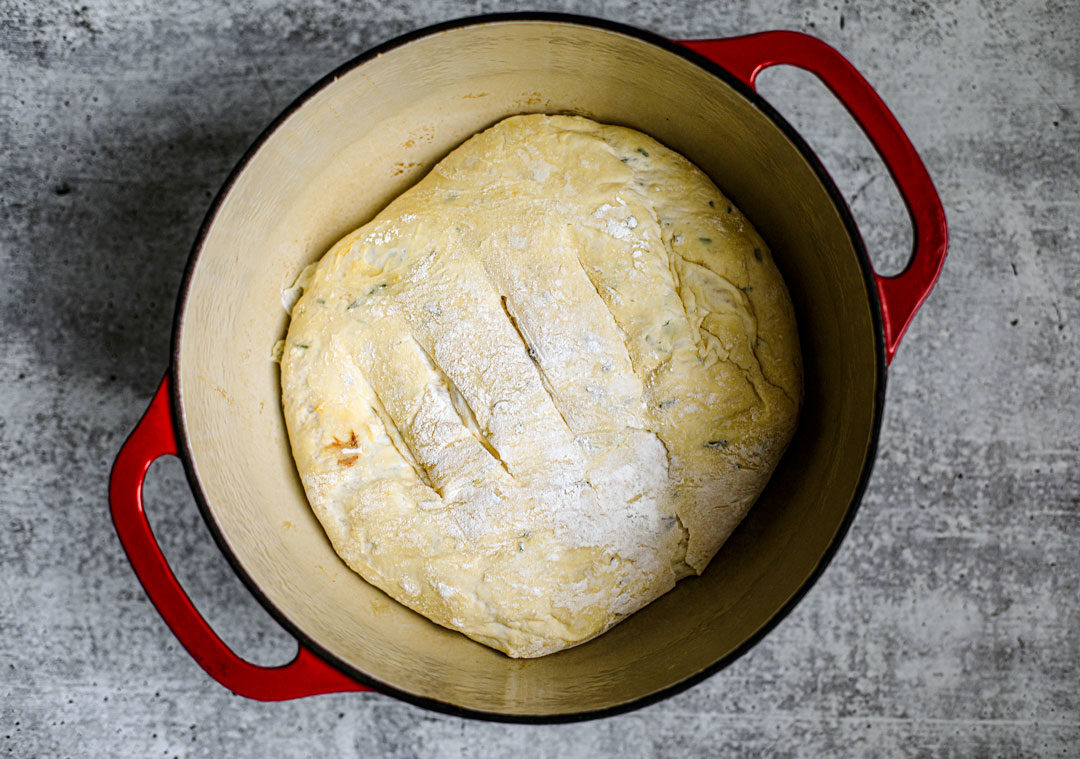
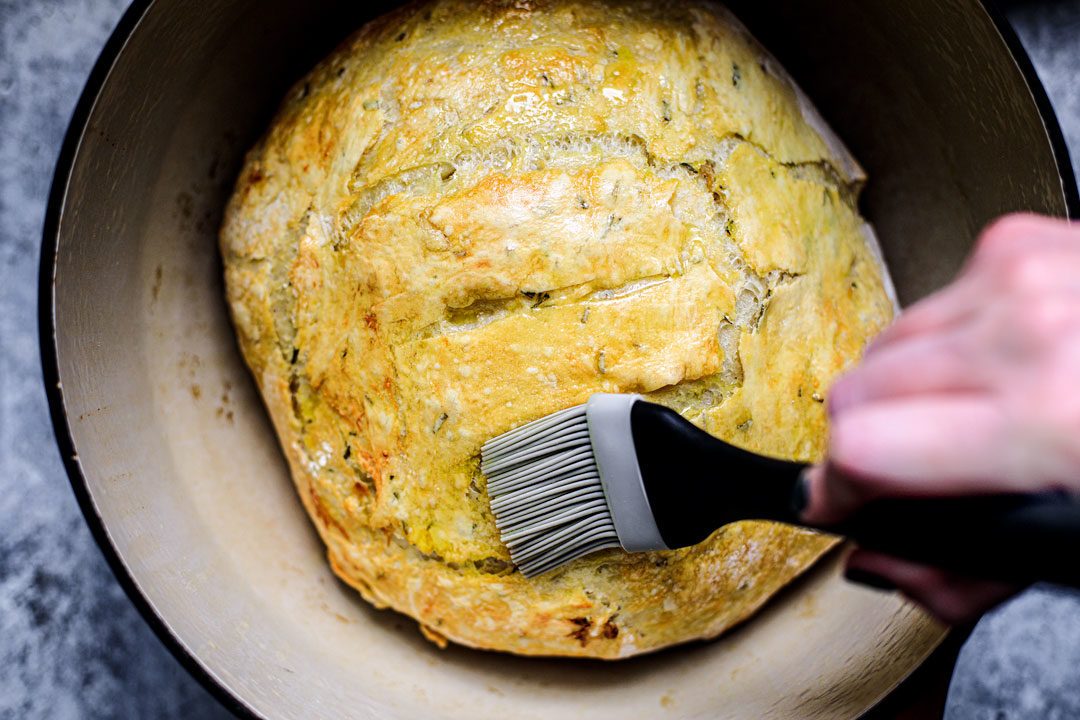
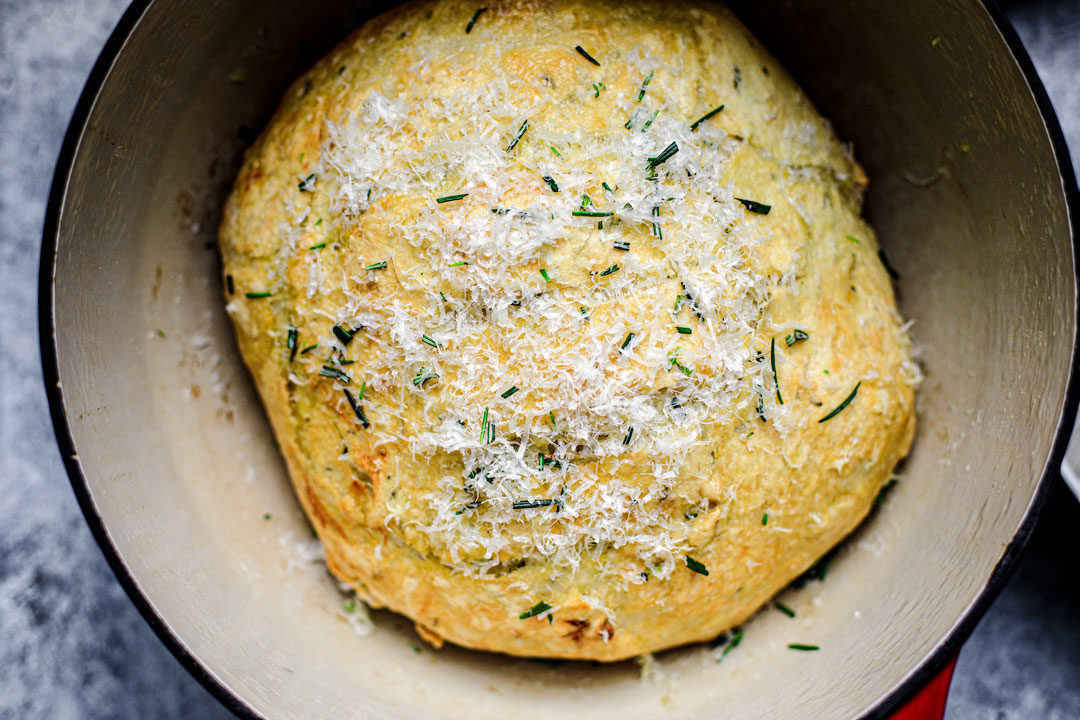
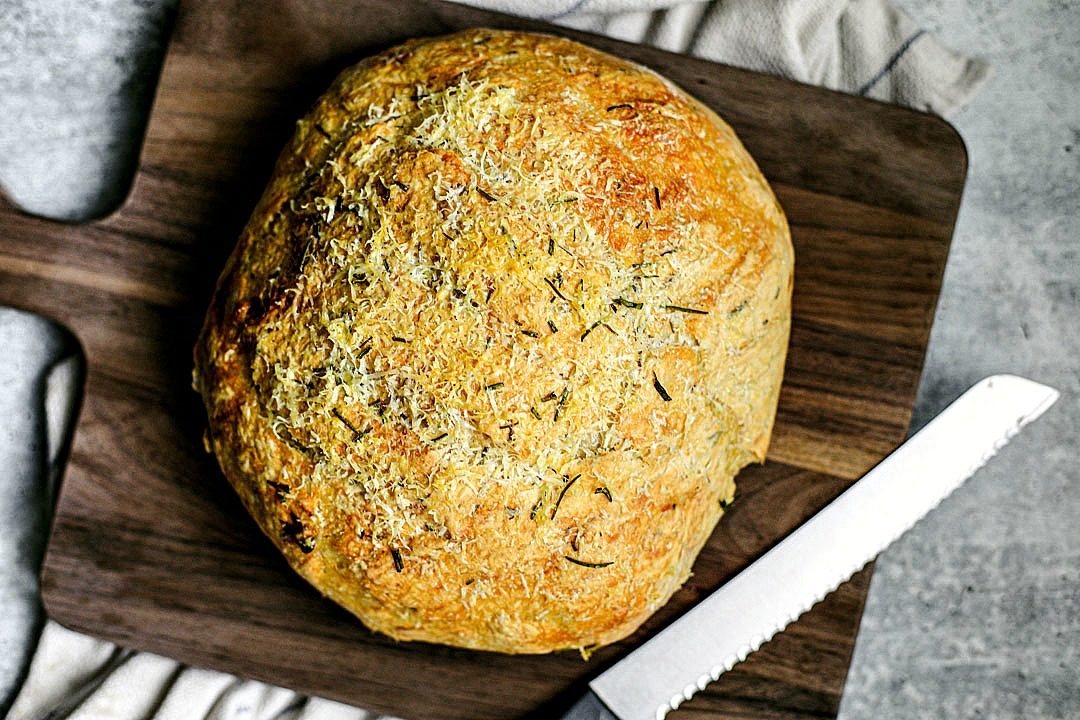
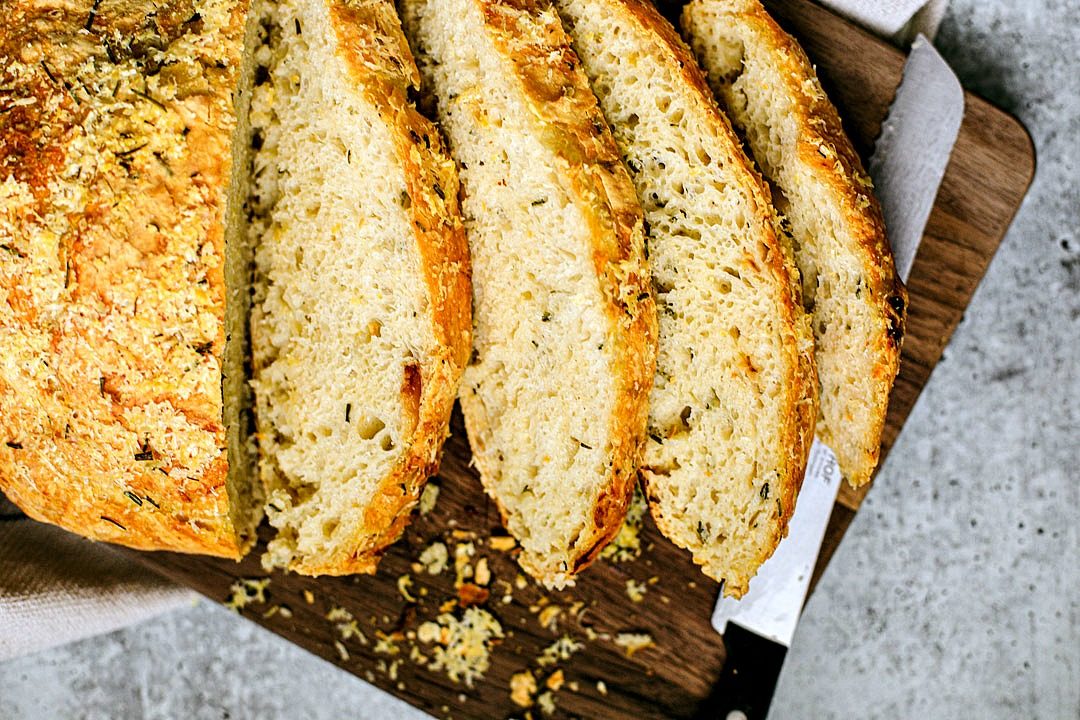






I made this for the first time yesterday, and it is a really good one! The only thing I’d change next time is only use about half the amount of rosemary; the flavor is just a bit too much. Thanks for the recipe!
Hi Jamee! I’m so glad you enjoyed it. And absolutely, if the rosemary is a bit much for you, you can totally scale it back to your liking :)
I have made your recipe many times. I absolutely love it!! Thank you. Can you freeze it?
Hi Julie! I’m so happy to hear this :) You can absolutely freeze it. I’d wrap it tightly in plastic wrap and pop it into an airtight freezer bag for best results. Thanks so much for taking the time to drop in with feedback!